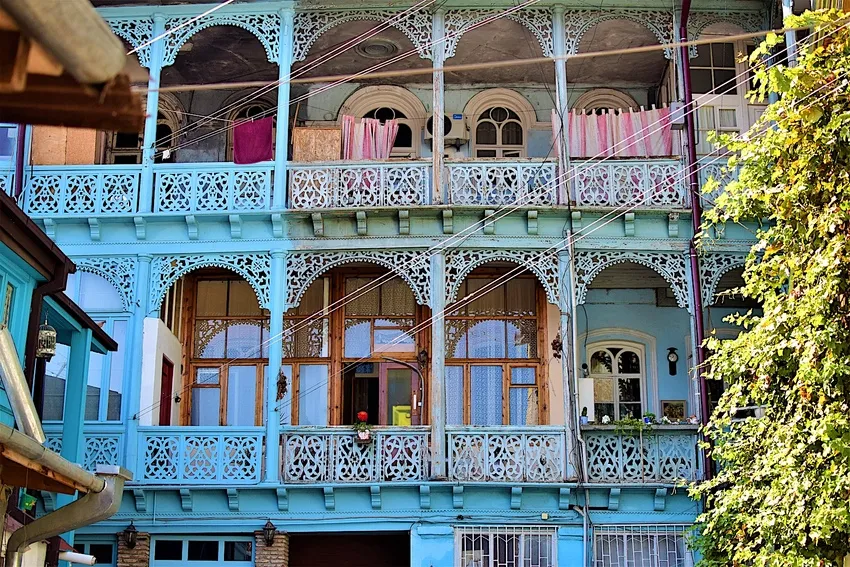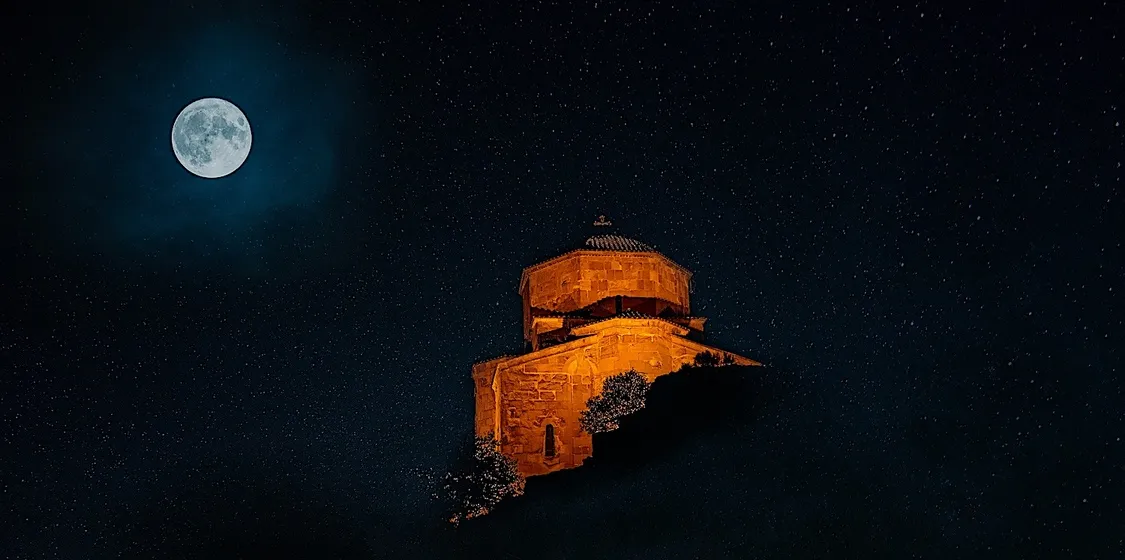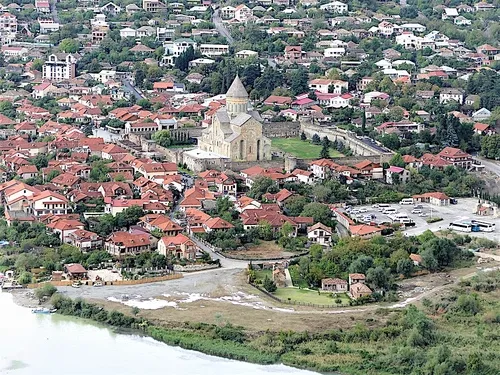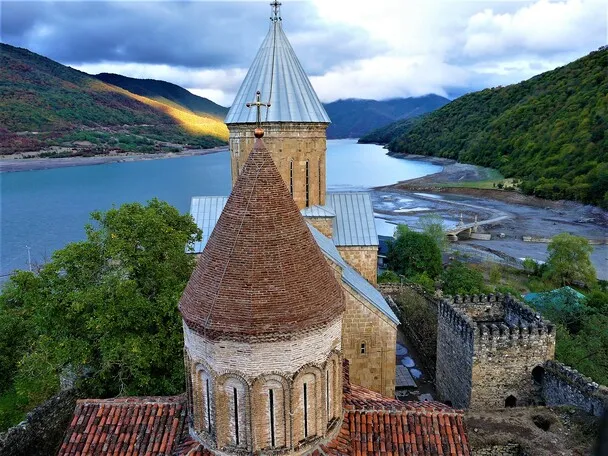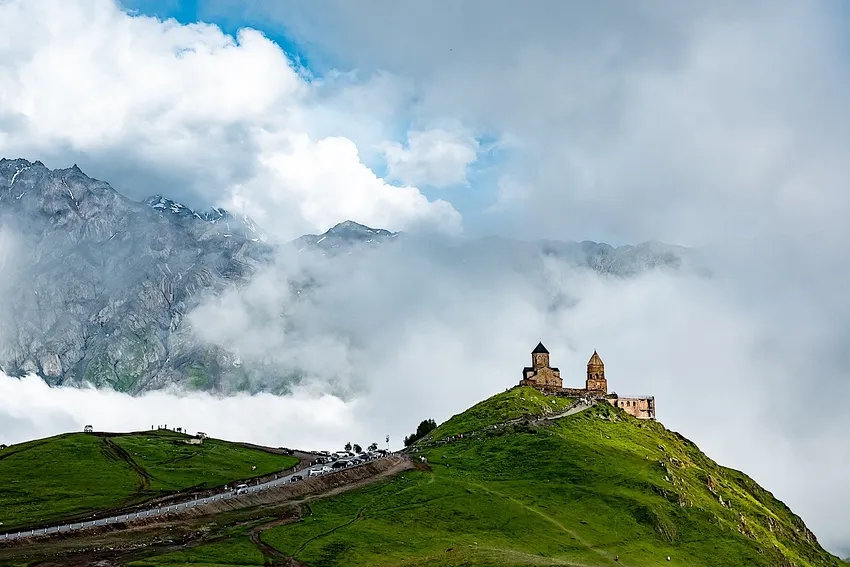-
Authentic Places
Metekhi Cathedral

In the very heart of old Tbilisi, on the left embankment of the river Mtkvari and in the historical neighborhood of Isani, is located the Metekhi Church of the Nativity of the Virgin Mary. Locals visit Metekhi for services every Saturday and Sunday and during religious celebrations, but travelers can be seen here at all times. Apart from being an important historical monument, Metekhi has a very good location. Captivating views of the colorful, multiethnic, and multireligious historical part of Tbilisi can nowhere be seen as well as from here.
History
Metekhi has a long and painful history of construction, destruction, and restoration. Firstly, in the 6th century, king Vakhtang Gorgasali built here a church, a castle, and a fort. This is the same king who is known to be the founder of Tbilisi. His monument can be observed in front of Metekhi, on the edge of the mountain, overlooking Tbilisi. Soon after the reign of King Vakhtang, we had the rule of Persians and Arabs. From the 8th century to the 11th century, Tbilisi was under the domination of Arabs, and the Fortress of Metekhi represented the residence of an Arab ruler; they were called Amira. King David the Builder liberated Tbilisi from Arabs and started a Golden Age in the history of The Georgian Kingdom. In his time and the times of his descendants, Metekhi was a Georgian Royal residence. In 1226, the church as well as the king's palace were destroyed by the Mongols; however, in 1289, King Demetre II rebuilt the church of Metekhi. The 16th and 17th centuries were dramatic in the history of the church. In those times, Metekhi was either abandoned or in the hands of Ottoman and then Persian rulers, who would use it for practical purposes and, in particular, to save some gunpowder. It was King Erekele II who restored the church and services in Metekhi in the 18th century. King Erekle later signs a treaty at Georgievsk with the Russian Empire. After the decease of King Erekle, the Russian Empire doesn't follow the treaty, and Georgia, together with the Georgian Church, becomes part of the Russian Empire. The Russians did things according to their will, so in 1819, by order of the general Ermolov, additional constructions were built around Metekhi to accommodate criminals and prisoners. Metekhi becomes a prison, and the church acquires a new purpose. It becomes the church of the prisoners. In 1937, another famous Georgian communist, Lavrenti Beria, decided to destroy Metekhi; however, Dimitri Shevardnadze, a painter, and others decided to oppose this idea. Dimitri was executed later, but the church survived. Later, Metekhi was used as a theatre and even as the workshop of a painter. In the end, in 1988, the Catholicos Patriarch of all Georgia, his holiness and beatitude, Illia II, revived religious life in Metekhi. Now it is a fully functional Georgian Orthodox church.
In the cathedral, the grave of Saint Shushanik can be found. On the right side of the altar, the grave of this 5th-century saint is placed. Saint Shushnik's story is famous throughout Georgia. The story was preserved in the form of the oldest hagiographic story. Saint Shushanik opposed her Zoroastrian husband and stayed Christian in spite of the tortures she was subjected to. If you look at the monument to King Vakhtang from the side of the church, in front of his leg, you will see three figures. Two men stand straight, and one is upside down. The third man is the husband of Saint Shushanik, who left Christianity and became Zoroastrian. He is depicted on the monument in times of his own punishment.
How to Get There
Metekhi is in the middle of the historical town. Metro station Avlabari is just 10 minutes of walk away, and the bus station is 5 minutes of walk away. Famous restaurants with amazing views are located right there. The Shadow of Metekhi and Kopala, both with traditional Georgian cuisine, are quite popular and near.

